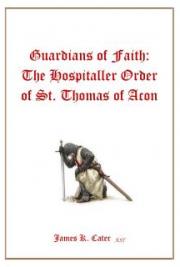FOOTNOTE
[1] The author acknowledges his indebtedness for liberal and valuable contributions on the subject of Physical Geography, Geology, &c., to the Rev. Dr. Adamson, for twenty years a resident at the Cape of Good Hope, and government director and professor in the South African college. He wishes also to express his obligations for frequent suggestions from the same source on scientific subjects, during the preparation of this work.
[2] The Rev. J. Leighton Wilson, who was a missionary of the American Board of Commissioners for Foreign Missions, at Cape Palmas and at the Gaboon River for more than twenty years, first called attention to a vine, or creeper, as affording india-rubber. It is now collected from this plant in the Gaboon district; and two or three cargoes have already been shipped to this country, with a prospect of its becoming a lucrative article of trade. We may look to intelligent missionaries, like Mr. Wilson, for securing such benefits to traffic and art, as well as to science and literature. We are glad to learn that he contemplates an extended work on Africa, which will no doubt be highly acceptable to the public.
[3] Boatswain was a native of Shebar. In his youth, he served in some menial capacity on board of an English merchant vessel, where he acquired the name which he still retains. His personal qualifications were of the most commanding description. To a stature approaching seven feet in height, perfectly erect, muscular and finely proportioned; a countenance noble, intelligent and full of animation, he united great comprehension and activity of mind; and, what was still more imposing, a savage loftiness, and even grandeur of sentiment—forming altogether an assemblage of qualities obviously disproportioned to the actual sphere of his ambition. He was prodigal of every thing except the means of increasing the terror of his name. “I give you a bullock,” said he to an agent of the society, “not to be considered as Boatswain’s present, but for your breakfast.” To his friend Bă Caiă, he once sent: “King Boatswain is your friend; he therefore advises you to lose not a moment in providing yourself plenty of powder and ball; or, in three days (the least possible time to make the journey), let me see my fugitive woman again.”
[4] Parliamentary papers, presented 1832, B., pp. 170, 171.
[5] The papers of the second slaver captured by the Perry were in form, excepting the crew list, which showed but one American on board, who was master of the vessel. And in a letter of instructions from the reputed owner, he was required to leave whenever the Italian supercargo directed him to do so. This shows how readily the nationality of a vessel may be changed.
[6] The master of the first slaver captured by the Perry, stated that had he not supposed she was an English cruiser, he would have been prepared with a foreign flag, and otherwise, to have eluded search and capture; and that on a former occasion he had been boarded by an English cruiser, when, to use his own expression, he “bluffed off John Bull with that flag;” referring to the American ensign.
[7] The “Lucy Ann,” when captured, was boarded fifty or sixty miles to leeward, or north of Loanda. She had an American flag flying, although her papers had been deposited in the consul’s office at Rio. The English boarding-officer, who was not allowed to see any papers, suspecting her character, prolonged his visit for some time. As he was about leaving the vessel, a cry or stifled groan was heard issuing from the hold. The main hatches were apparently forced up from below, although a boat was placed over them, and the heads of many people appeared. Five hundred and forty-seven slaves were found in the hold, almost in a state of suffocation. The master then hauled down the American flag, declared the vessel to be Brazilian, and gave her up.
[8] The following letter from Viscount Palmerston to Sir H. L. Bulwer, then British Minister at Washington, appears in the Parliamentary Papers of 1851. LVI. Part I.
[9] This correspondence, with much of that which is to be referred to hereafter, with the British officers, has been published more at length in the “Blue Book,” or Parliamentary Papers, of 1851.
[10] Parliamentary reports, 1850. H. L. evidence.







